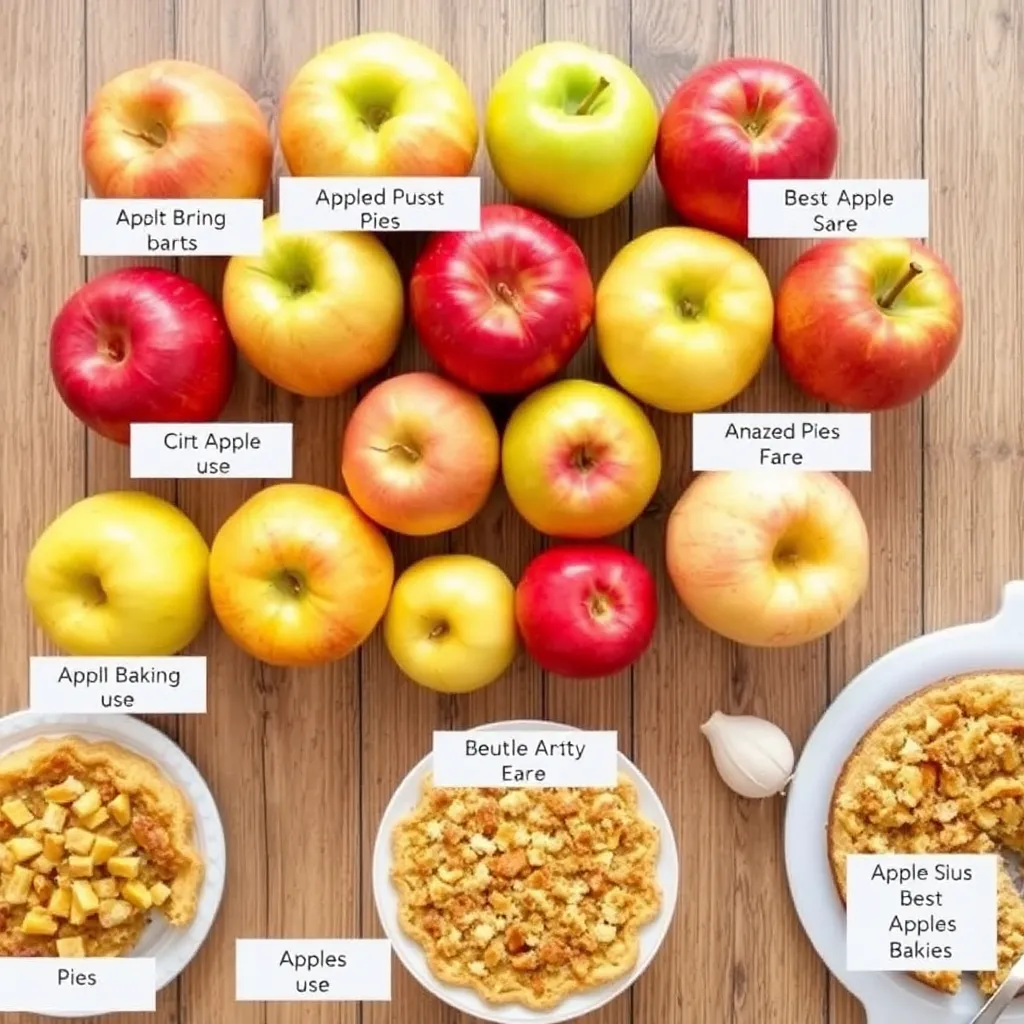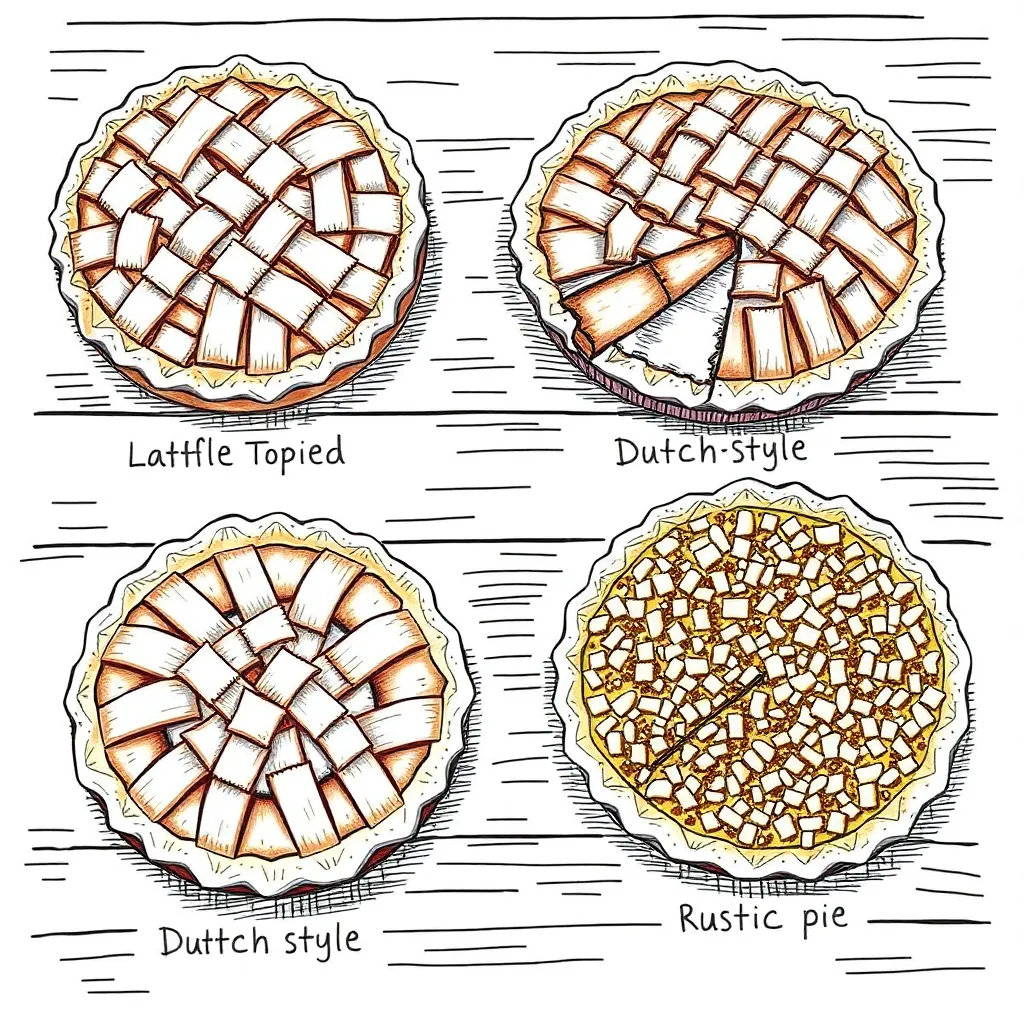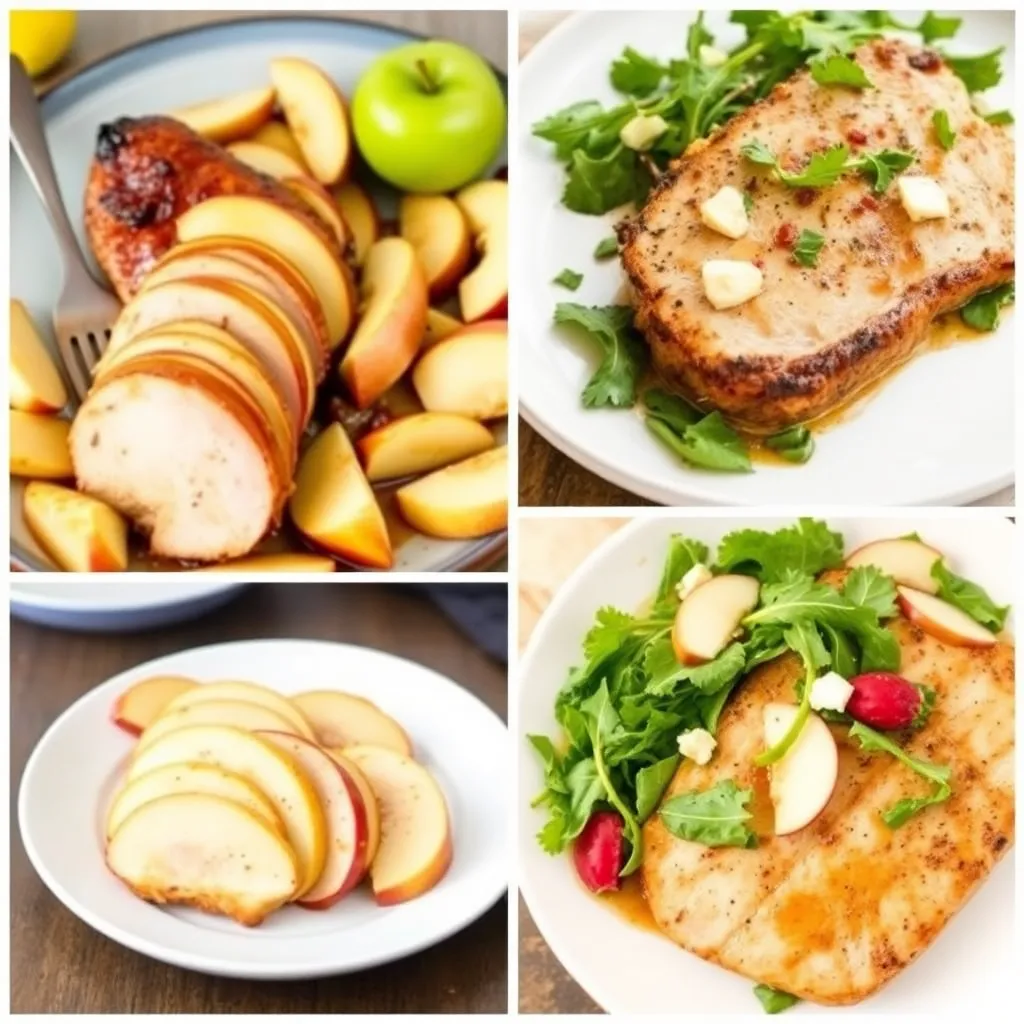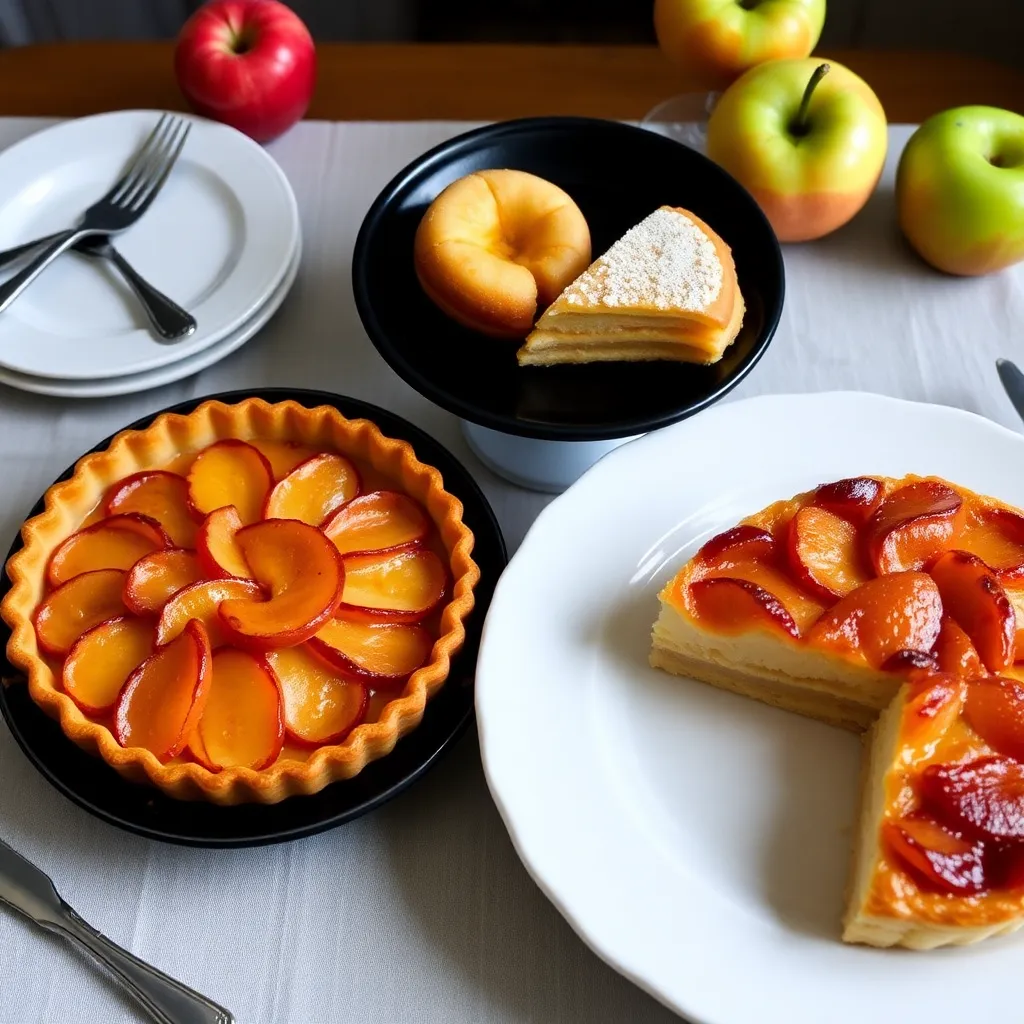· recipes · 3 min read
Best Baking Apples Guide: Which Variety for Which Dessert
Discover why certain apple varieties work better in specific desserts and learn how to choose the perfect apple for every baking project. From firm pie apples to sauce-ready varieties, this guide covers everything you need to know about baking with apples.

Understanding Apple Characteristics
The success of your apple desserts often comes down to choosing the right variety for your specific recipe. Different apples bring different qualities to your baking:
- Firmness: Determines how well apples hold their shape during baking
- Sweetness: Affects how much sugar you’ll need to add
- Tartness: Provides balance and depth of flavor
- Moisture Content: Influences texture and baking time
- Pectin Levels: Affects thickening in pies and preserves
Let’s explore the best apple varieties for different types of desserts and why they work so well in each application.
Best Apples for Pies
Firm-Structure Varieties
Granny Smith
- Extremely firm texture
- High tartness
- Holds shape perfectly
- Best for traditional double-crust pies
- Pairs well with sweeter apples
Honeycrisp
- Crisp, firm texture
- Sweet-tart balance
- Excellent juice content
- Perfect for lattice-top pies
- Maintains shape while softening appropriately
Pink Lady
- Dense, firm flesh
- Complex sweet-tart flavor
- Resists browning
- Great for deep-dish pies
- Holds up well during long baking
Best Pie Combinations
Classic Pie Mix
- 60% Granny Smith
- 40% Honeycrisp
- Perfect balance of tart and sweet
Complex Flavor Mix
- 50% Pink Lady
- 25% Granny Smith
- 25% Braeburn
- Creates layers of flavor
Best Apples for Cakes and Muffins
Softer Varieties
Gala
- Naturally sweet
- Tender flesh
- Moistens baked goods
- Perfect for coffee cakes
- Great for morning bakes
Fuji
- Very sweet flesh
- Maintains some texture
- Excellent moisture content
- Ideal for muffins
- Good for chunky apple cakes
Best Cake Applications
Coffee Cake
- Gala or Fuji
- Dice into small pieces
- Toss with cinnamon sugar
Muffins
- Fuji or Gala
- ¼-inch dice
- Mix with firmer varieties
Best Apples for Sauce and Butter
Sauce-Ready Varieties
McIntosh
- Breaks down easily
- Natural sweetness
- Perfect sauce texture
- Quick cooking time
- Great for butter too
Cortland
- Soft flesh
- Resists browning
- Sweet-tart balance
- Excellent for sauce
- Good for butter
Sauce Combinations
Classic Applesauce
- 75% McIntosh
- 25% Honeycrisp
- Smooth with some texture
Apple Butter Blend
- 50% Cortland
- 50% Fuji
- Rich, caramelized flavor
Best Apples for Crisps and Crumbles
Medium-Firm Varieties
Jonagold
- Honey-sweet flavor
- Holds shape but softens
- Perfect for crisps
- Good juice content
- Balanced tartness
Braeburn
- Spicy-sweet flavor
- Maintains texture
- Excellent for crumbles
- Doesn’t get mushy
- Great depth of flavor
Crisp Combinations
Traditional Crisp
- 70% Jonagold
- 30% Granny Smith
- Perfect texture contrast
Complex Crumble
- 50% Braeburn
- 50% Pink Lady
- Rich, spicy flavor
Seasonal Availability Guide
Fall (Peak Season)
- Honeycrisp (September-November)
- Granny Smith (October-December)
- Pink Lady (October-December)
- Braeburn (October-December)
Winter Storage
- Fuji (Stores well through March)
- Pink Lady (Stores well through April)
- Granny Smith (Stores well through May)
Year-Round Options
- Granny Smith
- Fuji
- Gala
Storage Tips for Baking Apples
Short-Term Storage
- Keep in crisper drawer
- Maintain 32-40°F temperature
- Check regularly for soft spots
- Remove any damaged fruit
Long-Term Storage
- Store in cool basement
- Maintain 30-32°F temperature
- 90% humidity ideal
- Check monthly for quality
Preparation Tips
General Guidelines
Peeling
- Use for smooth textures
- Optional for rustic dishes
- Required for sauce
- Consider recipe requirements
Cutting
- Consistent sizes cook evenly
- Thinner for pies (¼ inch)
- Larger for crisps (½ inch)
- Tiny dice for cakes (⅛ inch)
Preventing Browning
- Lemon juice bath
- Salt water solution
- Work quickly
- Keep cut apples covered
Substitution Guide
Emergency Swaps
For Pie Apples
- Instead of Granny Smith → Pink Lady
- Instead of Honeycrisp → Braeburn
- Instead of Pink Lady → Jonagold
For Sauce Apples
- Instead of McIntosh → Cortland
- Instead of Cortland → Gala
- Instead of Golden Delicious → Fuji
FAQs
Can I mix different varieties?
- Yes, mixing creates complex flavors
- Keep textures similar
- Consider cooking times
- Balance sweet and tart
How many apples per recipe?
- Pie: 6-8 medium apples
- Crisp: 4-6 medium apples
- Cake: 2-3 medium apples
- Sauce: 8-10 medium apples
Should I always peel apples?
- Pies: Yes, usually
- Crisps: Optional
- Cakes: Yes
- Rustic dishes: Optional
How do I avoid soggy pies?
- Choose firm varieties
- Don’t cut too small
- Pre-cook filling
- Use thickener
Understanding apple varieties and their best uses will elevate your baking from good to exceptional. Remember that while these are tested recommendations, don’t be afraid to experiment with different combinations to find your perfect blend.
Happy baking!


